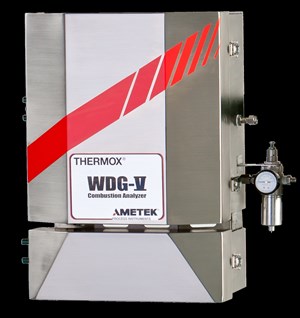News
Sponsored: Catalytic detector solutions for flue gas analysis in high hydrogen combustion
JOE LEBARTY and TIM TALLON, AMETEK Process Instruments
As both countries and corporations adapt to new regulations and emission control, many industrial operators are seeking solutions to decarbonize their heated processes. Even though certain equipment can be electrified, some processes in the industrial space require high temperatures that can only be generated through a combustion process. One emerging approach is to replace the use of carbon-based fossil fuel (partially or completely) with hydrogen (H2), which does not generate CO2 emissions when combusted. As these industrial combustion processes move towards H2 and high H2 fuels, the technology around combustion control and safety monitoring systems becomes an important area of focus. In particular, this includes the monitoring of the exhaust gas, often referred to as flue gas analysis.
Used widely across the fired equipment of the hydrocarbon processing, chemical and power industries, flue gas analysis consists of the monitoring of excess oxygen, combustibles [or parts per million (ppm) levels of products of incomplete combustion or partially combusted fuel, such as CO+H2], and unburnt fuel to provide post-combustion feedback for safe and efficient operation. Flue gas analysis can be conducted through various technologies for each of these measurements, and interestingly, there are several catalytic detectors that can be used to monitor for ppm and even H2 vol% levels, which may be a result of incomplete combustion or unburnt fuel release.
Of the two catalytic detector types, both catalytic bead (hot-wire) and RTD thick-film detector types can function to measure ppm-levels of combustibles, including H2. While being catalytic in nature (and un-speciated to one analyte), these detectors can be tuned to a specific zone of reactivity using calibration gas to be more sensitive to a certain range of analytes. To reflect incomplete combustion, these catalytic detectors can be calibrated with ppm-levels of CO and H2 together for a single combustibles’ measurement, benefitting combustion processes using both high H2 and pure H2 fuels (FIG. 1).

For percentage measurements, only the catalytic bead (hot-wire) type can be controlled to operate hot enough to crack methane and monitor for hydrocarbons and unburnt fuel, including H2. For greater sensitivity, it is a best practice to calibrate these detectors with a percentage level of H2, in addition to any other hydrocarbon of interest in the fuel, to provide a useful monitor for detecting potential fuel leaks and loss of flame at the burners.
Although not currently mainstream, H2 is becoming more common as a clean fuel source to decarbonize the future of industrial combustion processes. Looking ahead at this transition, catalytic detectors provide a pathway to serve these processes for the detection of ppm- and percent-levels of H2 to ensure safe and efficient combustion control.

